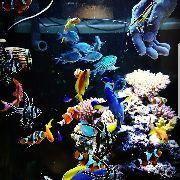Activated carbon indicted in inducing head and lateral line erosion
-
Topics
-
Latest Update
-
0
WTB Gorgonian
Looking for photosynthetic gorgonians. Please reply with price and size, thank you! -
0
Wts: Lps colony
Have the following to sell. Collection at loyang area or delivery can be arranged. Please whatsapp 9071 8848 to deal. Thanks F1: Reverse hammer (around 10 heads) - $58 F2: Gold tips hammer (around 10 heads) - $48 F3: Japanese Lumi Toadstool (picture not fully extended) - $48 -
1
WTS All Equipments and Accessories
pls whatsapp at 91165391 tks Bubble magus Fluidized reactor $80 Hailea HS-66a chiller with pump $180 AI Hydra 64 without arm $450 LED Light 8w 8000-12000k $10 Aquaize RODI Filter $150 Eheim 1262 without pump cover $60 Test kit all $30 KH, Cal, Mag, Iodine+,Kalkwesser and Strontium new and used all $70 -
3
-
4
-







Recommended Posts
Join the conversation
You can post now and register later. If you have an account, sign in now to post with your account.